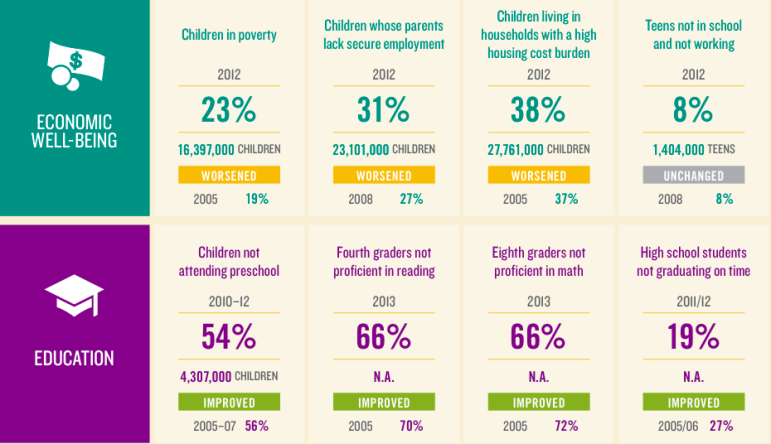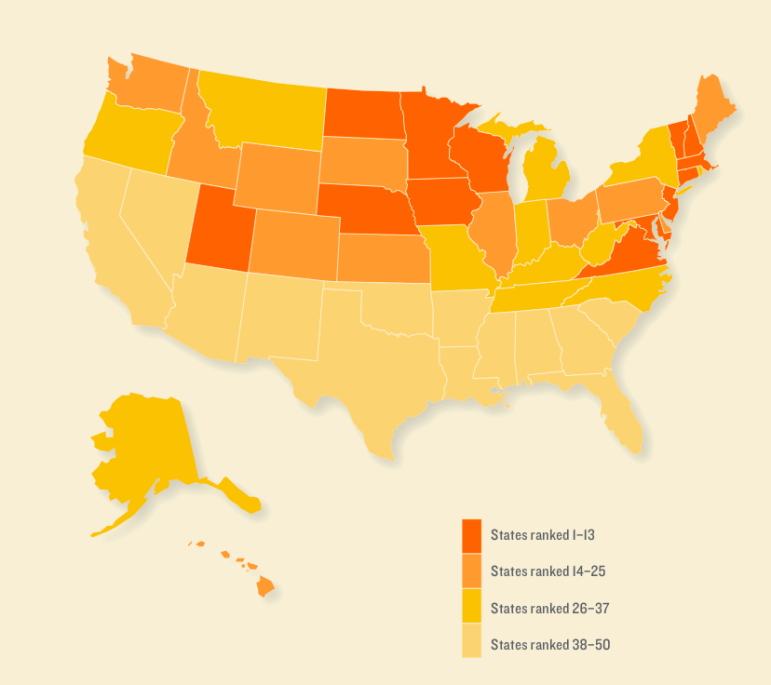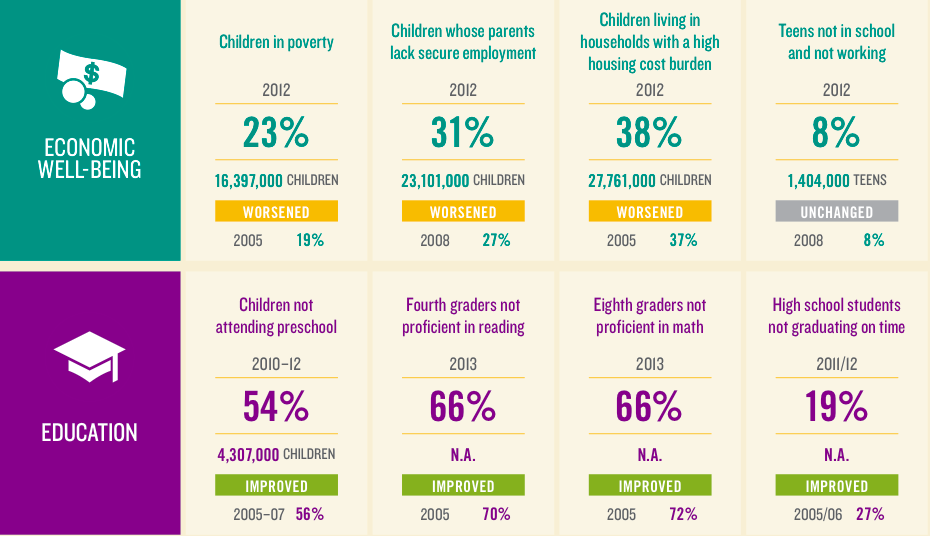
Annie E. Casey Foundation
By some economic measures, children in the United States are faring less well than they were in 2005. They show gains in education, however, especially in the percentage of high school students who graduate on time.
The economic well-being of children has worsened since 2005, but children’s health and education has improved, according to the annual Kids Count report, released today (July 22) by the Annie E. Casey Foundation.
Twenty-three percent of kids now live in families below the poverty level, compared with 19 percent in 2005, according to the report. Thirty-one percent of kids live with parents who lack secure employment.
The report also provided a glimpse over a 25-year span — since this year marks the foundation’s 25th consecutive year of measuring the well-being of children.
In 1990, 21 percent of children lived below the poverty line. That decade, however, saw an economic boom and a series of policy changes, according to the report. As more single mothers were brought into the workforce through changes in welfare, they were provided supports in the form of the Earned Income Tax Credit, child-care subsidies, food stamps and health insurance for children.
By 2000, the child poverty level had dropped to 16 percent.
“These figures illustrate that federal and state anti-poverty efforts can — and are — making a substantial difference in the lives of low-income children and families,” the report said.
Those improvements, however, were eroded by the recession and the continued weak labor market, in which low-wage jobs and nonstandard jobs without benefits have grown.
Gains in education
Despite a widespread concern that the education system is failing, education has improved, the Casey Foundation said. Early childhood programs have expanded steadily since Head Start began in 1994.
Reading and math scores overall have improved since 2005, as have high school graduation rates. In the 2005-2006 school year, 27 percent of high school students did not graduate on time. Today, the percentage has fallen to 19.
However, the gap between low-income and higher income students’ test score has steadily widened.
“Our high child poverty rate constrains our nation’s academic achievement,” the report notes.
Big difference in health
Children’s health has improved markedly, the report said. Only 7 percent of children lacked health insurance in 2012, compared with 10 percent in 2008. Over the past 25 years, the death rate for kids and teens has steadily dropped due to medical advances and also to safety measures, such as the increased use of bike helmets, car seats and seat belts.
In addition, the teen birth rate has dropped dramatically from 2005 to 2012, from 40 per 1,000 to 29 per 1,000.
More children, however, are living in single-parent households and in high-poverty areas, the report said.
“The biggest challenge in an era of increasing inequality in income and wealth is the widening gulf between children growing up in strong, economically secure families within thriving communities and children who are not,” according to the report.
African-American, American Indian and Latino children continued to experience much higher poverty and other negative outcomes as measured in the report.
Children’s well-being also varies by geographic area, with Massachusetts, Vermont, Iowa, New Hampshire and Minnesota having the highest overall child well-being, based on the indicators measured in the Kids Count report. Arizona, Louisiana, Nevada, New Mexico and Mississippi have the lowest ranking.

Annie E. Casey Foundation
The 2014 Kids Count report from the Annie E. Casey Foundation ranked states based on how well children are faring. States with the highest ranking are Massachusetts, Vermont, Iowa, New Hampshire and Minnesota. The lowest-ranking states, based on measure of economic, health, educational and family well-being, are Arizona, Louisiana, Nevada, New Mexico and Mississippi.






























